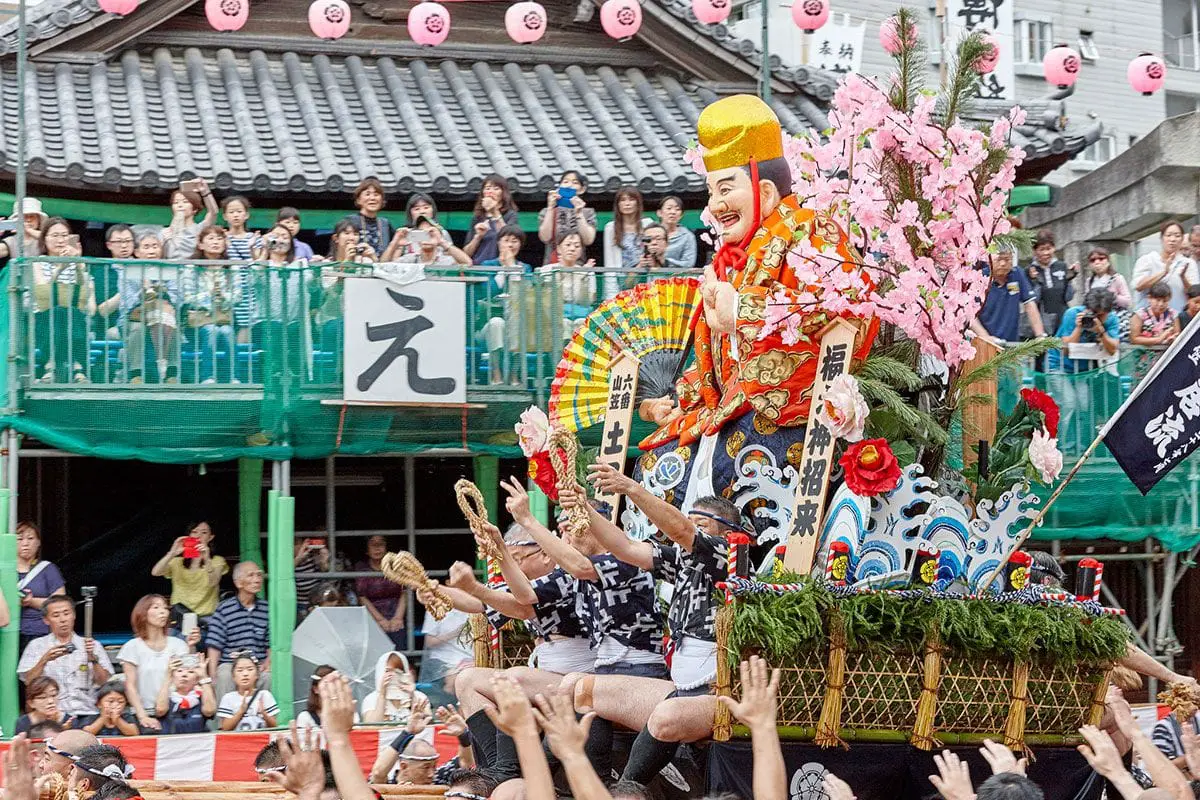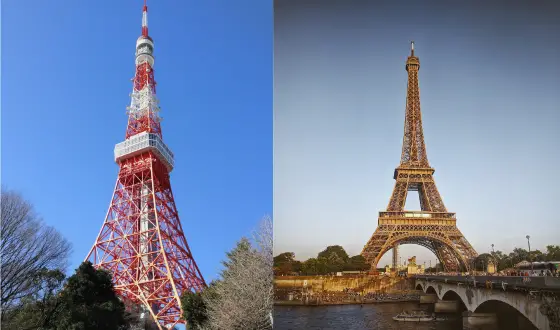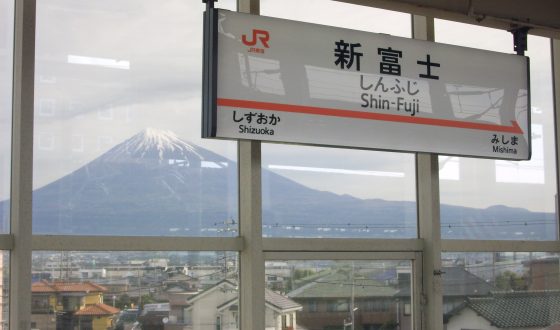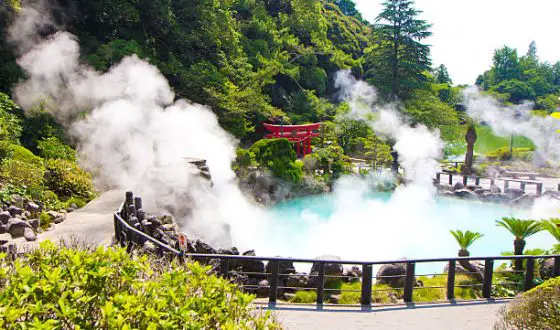Best Japanese Summer Festivals and How to enjoy them
Compared to sakura or foliage season, there is one thing that summer in Japan offers the best, which is festivals! Japanese summer festivals are not only seriously fun but they also allow you to immerse in the local culture. So check out the following list of top festivals you should join next time you visit Japan during summertime. And we also recommend what to wear, eat, and play to make the most of the festivals in this guide.
List of best Japanese Summer festivals
1. Kanda Matsuri (神田祭) & Sanno Matsuri (山王祭)
Location: Tokyo, Japan. The best place to enjoy the festivals is the host shrine, Kanda Myojin Shrine, and Hie Shrine, near the time of its beginning and end.
Time: mid-May, Kanda Matsuri (odd-numbered years), Sanno Matsuri (even-numbered years)
Highlight: a day-long parades of mikoshi (portable shrines) by locals on the Saturday and Sunday closest to May 15
Fun fact: In the past, these two festivals used to happen at the same time yearly. Since they were both the most popular Japanese summer festivals and the only two permitted to travel through the Edo Castle grounds, the rivalry between them was once too intense. So, now they must take turns to be held.
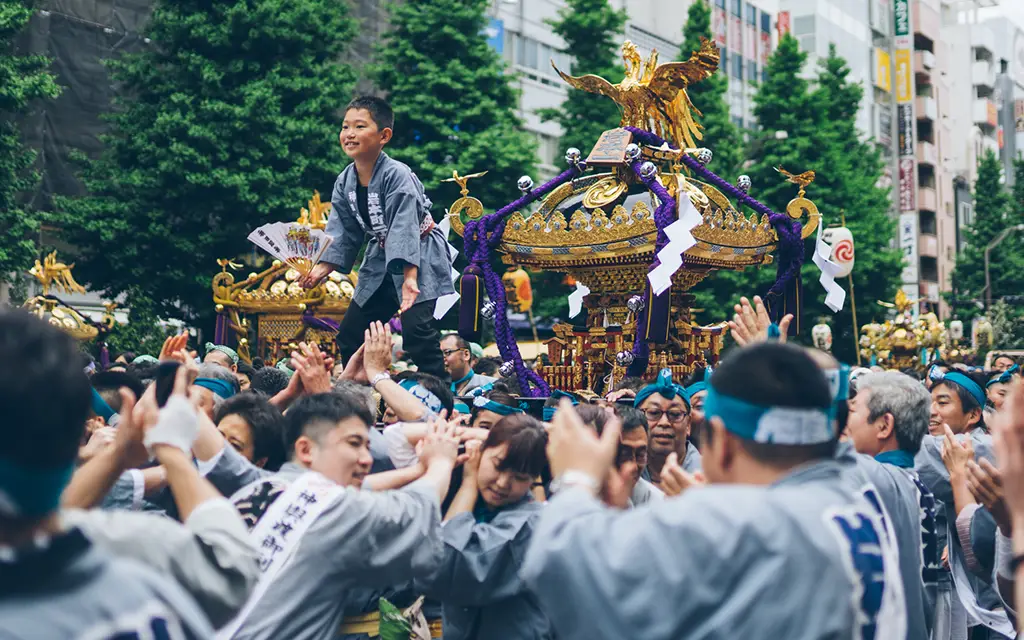
When the mikoshi is carried around the streets, many people wearing traditional costumes.
SEE MORE:
- 19 Vibrant Festivals In Japan Throughout The Year
- Kimono and Yukata Rental at Kimono Miyabi in Tokyo Asakusa/Ueno (Fireworks Festival Exclusive)
While Kanda Festival enshrines the wealth and good fortune of the people, Sanno Matsuri celebrates the deity who guards Tokyo. The two festivals seem quite similar in terms of activities. When the mikoshi is carried around the streets, many people wearing traditional costumes, for example, samurai armor for men along with dressed-up musicians and dancers. The result is Tokyo streets these days are more colorful, filled with music and a cheerful atmosphere (P/s: Don’t miss the Taiko drum performance during Kanda Festival.)
Of course, the priests also take part in and they will ride horses. This parade will last from 8 a.m when the mikoshi leaves the host shrine to 7 p.m when it returns. If you are hungry, there are a range of food stands scattering all places near the routine of the parade.
2. Sumidagawa Fireworks Festival (隅田川花火大会)
Location: Tokyo, to be specific, banks of the Sumida River. There are two Venues, one in close proximity to Sakura Bridge; one between Komagata Bridge and Umaya Bridge. For location details, please click here. Sumida Park is a widely chosen place for a good viewpoint for both.
Time: The final Saturday of July. However, if it rains, the festival will be abandoned.
Highlight: firework display, food, and music
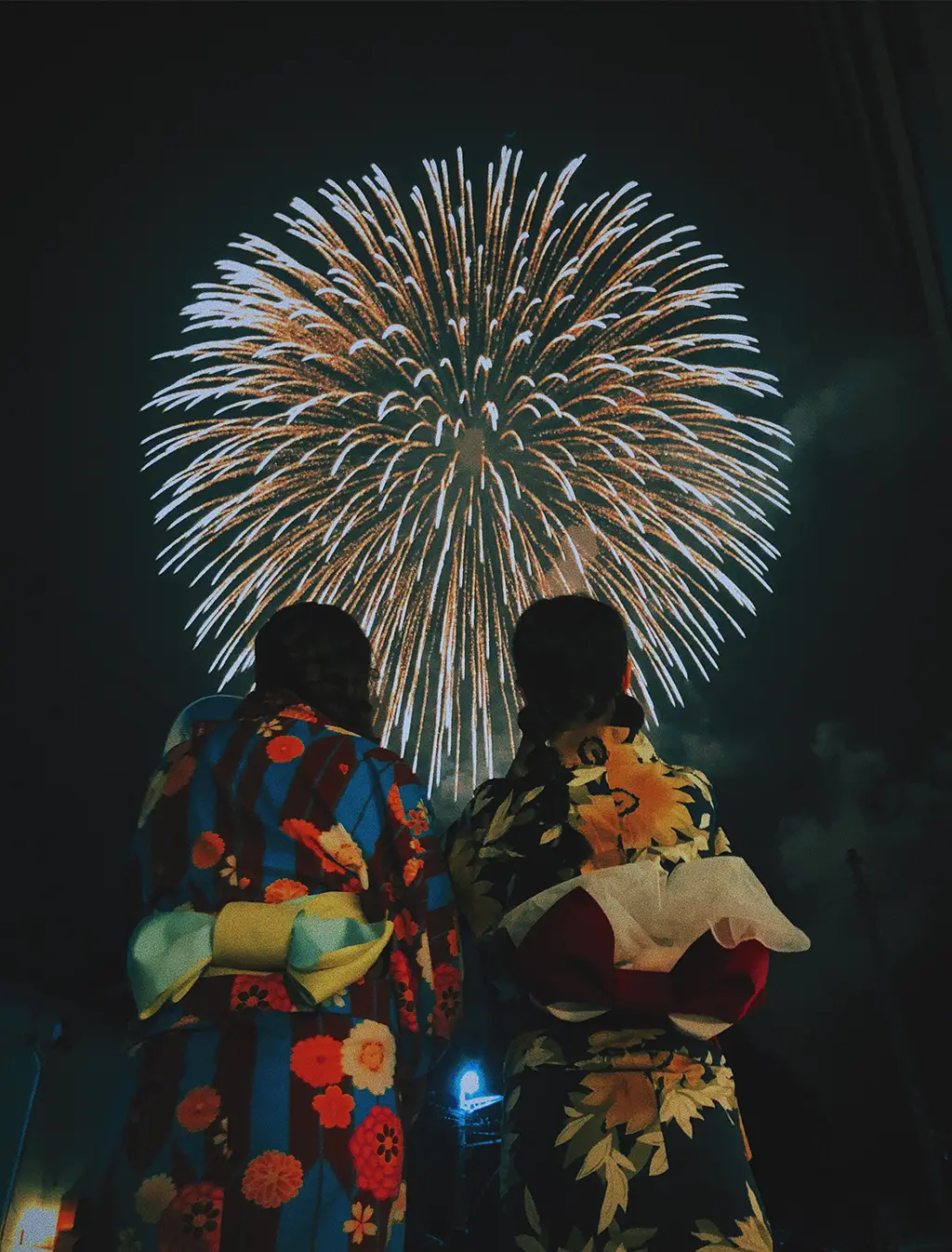
Sumidagawa Fireworks Festival is one of the earliest fireworks festivals in the world
It was first established during Edo period, particularly 1732, which makes it one of the earliest fireworks festivals in the world. Ever since The Sumida River Fireworks Festival is held annually with a total of 20,000 Hanabi (Japanese fireworks) launched to celebrate the holiday and there is also a fireworks display competition afterward. Every year, around a million people attend the festival and they all wear the yukata (summer versions of kimonos).
3. Aomori Nebuta Matsuri (青森ねぶたまつ)
Location: downtown Aomori City. The best spot is Rassera Land near the ASPM building.
Time: at night, from August 2 to 7, annually.
Highlight: a parade of huge illuminated lantern floats, followed by taiko drums, musicians, and dancers. On the final day, fireworks light up the sky as the floats are placed in boats and set afloat around the Aomori Bay on the sea.
Fun fact: Aomori Nebuta Matsuri is named as a “World Intangible Cultural Heritage” event.
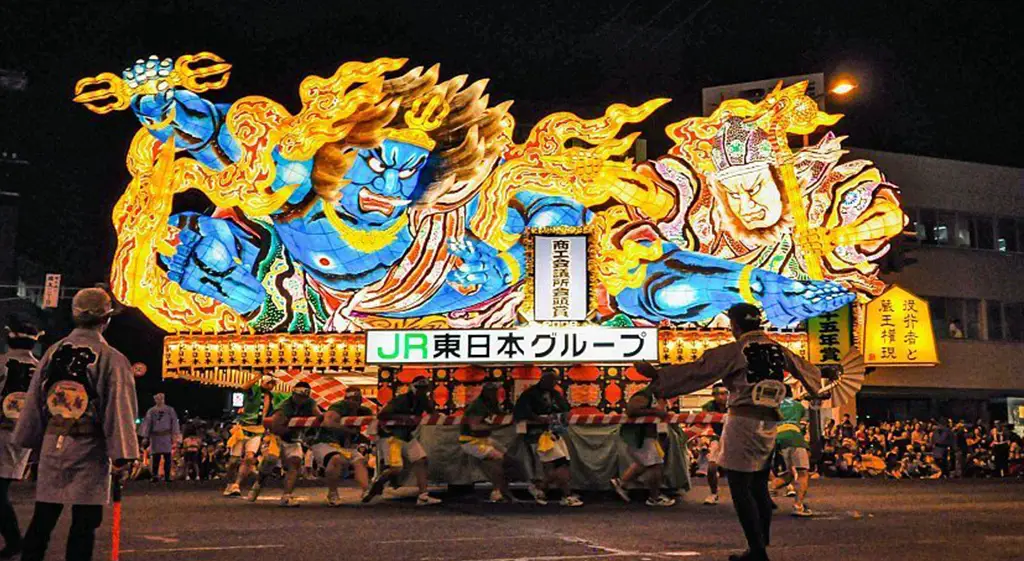
The floats, handmade from wireframing and painted washi paper, represent important Japanese gods, myths, or historical characters
Aomori Nebuta Matsuri is no doubt one of the most visually pleasing Japanese summer festivals that you have to visit when coming to Japan. That’s why it attracts approximately 3 million attendees every year. The floats, handmade from wireframing and painted washi paper, represent important Japanese gods, myths, or historical characters. Their sizes may vary but can be a maximum of 30ft (9m) in length and 16ft (5m) tall, which means one can easily take up the width of the road. Besides, it can’t belong to Japanese summer festivals without dancing. The unique dancers of this festival are called Haneto who jump and dance as they shout “Rassera, rassera”. Actually, they are not even professional dancers but the local residents themselves, so you could rent a Haneto set for ¥4,000 and join them.
The festival lasts for 5 days, however, I recommend you join on the night of August 4 to 6 when there are more pattern carried and don’t forget the firework on August 7.
4. Hakata Gion Yamakasa (博多祇園山笠
Location: Hakata, Fukuoka
Time: July 10-15
Highlight: Oiyamanarashi, the main event happens on the last day when 7 districts of Hakata send their best kakite (man) to carry the Yamakawa (decorative one-ton floats) and marathon 5 kilometers to the Kushida shrine while shouting “Oisa!”.
Fun fact: That sound has also been chosen as one of the 100 Soundscapes of Japan by the Ministry of the Environment.
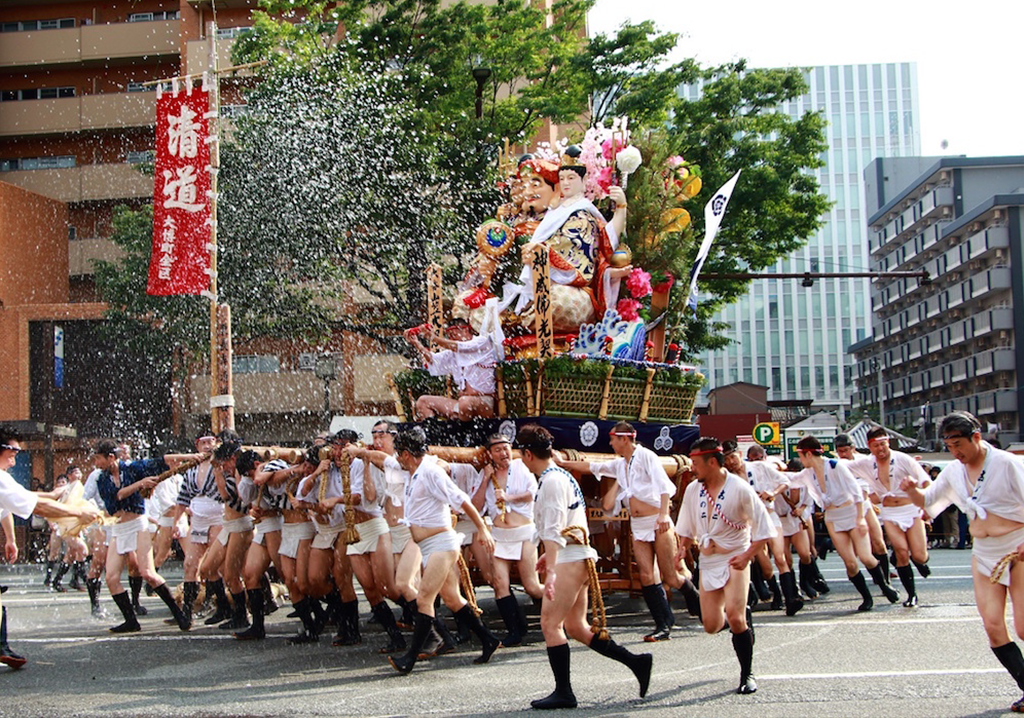
Participant of Hakata Gion Yamakasa wears loincloth-clad and running around town.
Hakata Gion Yamakasa is easy to spot and distinguished from other Japanese summer festivals. Every participant wears loincloth-clad and running around town. Of course, the participants are only men. The festival lasts for a few days. So before the main event, you can still join some previous ceremonies and watch yamakasa floats display anywhere in the city or at least admire the view of thousands kakite practicing running.
5. Obon Matsuri (お盆)
Location: All areas of Japan
Time: August 13-15
Highlight: Chochin (paper lanterns) and obon odori (folk dances)
The Obon festival or Bon festival is a major Japanese summer festival and national holiday. Its aim is to pay tribute to and memorialize the ancestors so it is sometimes called the festivals of the dead. To guide the dead spirit home, the Japanese hang the lanterns everywhere in the street, in the graves of the deceased family member, in-home front door. A typical dance performance call obon odori and food are offered at the parks, temples, and many other public places all over Japan. The dancers dress in yukata and you are welcomed to join them.
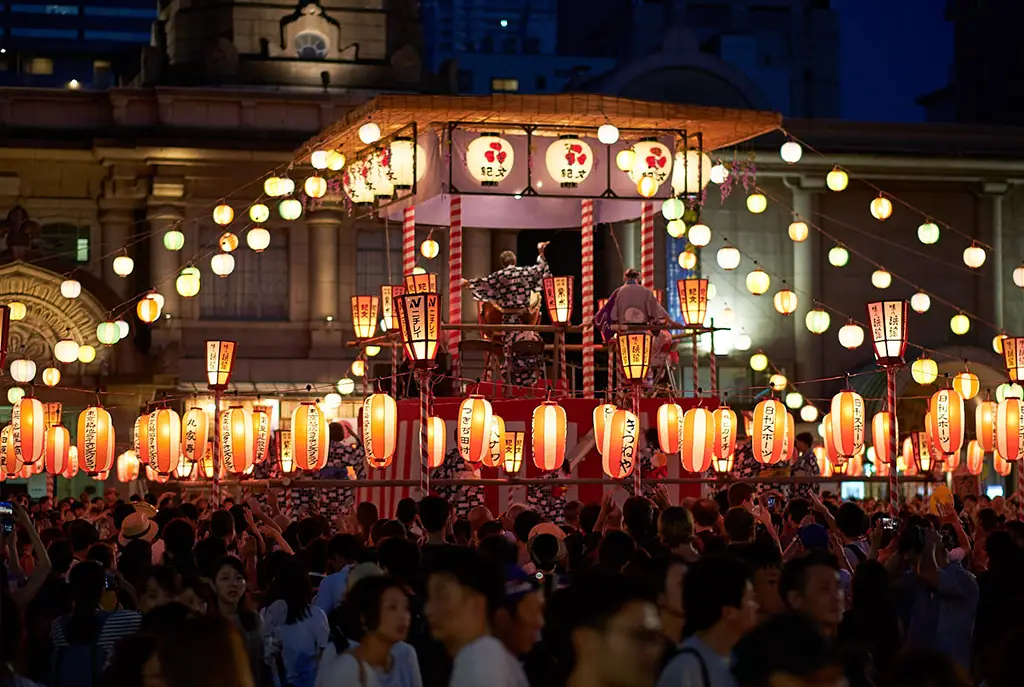
Obon festival is the festival of the dead.
Among all Bon festivals, the Daimonji Festival held in Kyoto is likely to be the most well-known. They build enormous character-shaped bonfires with a length of about 200m on the mountain so that it can be seen from the city.
How to enjoy Japan Summer festivals
What to wear
As a foreigner, you can dress casually in all Japanese summer festivals. If you want, you can dress up in traditional costumes according to each festival, for example, Haneto set in Aomori Nebuta Matsuri. However, one thing that will help you enjoy the holiday in Japan during summer tremendously more is the clothes suitable for the weather which can be hot and humid. Check out this article about what should you wear in Japan summer.
What to eat
What you should look for in Japanese summer festivals are not the common dishes ordered from restaurants but a mixed variety of street foods and unique cuisine of the summer.
Yakisoba
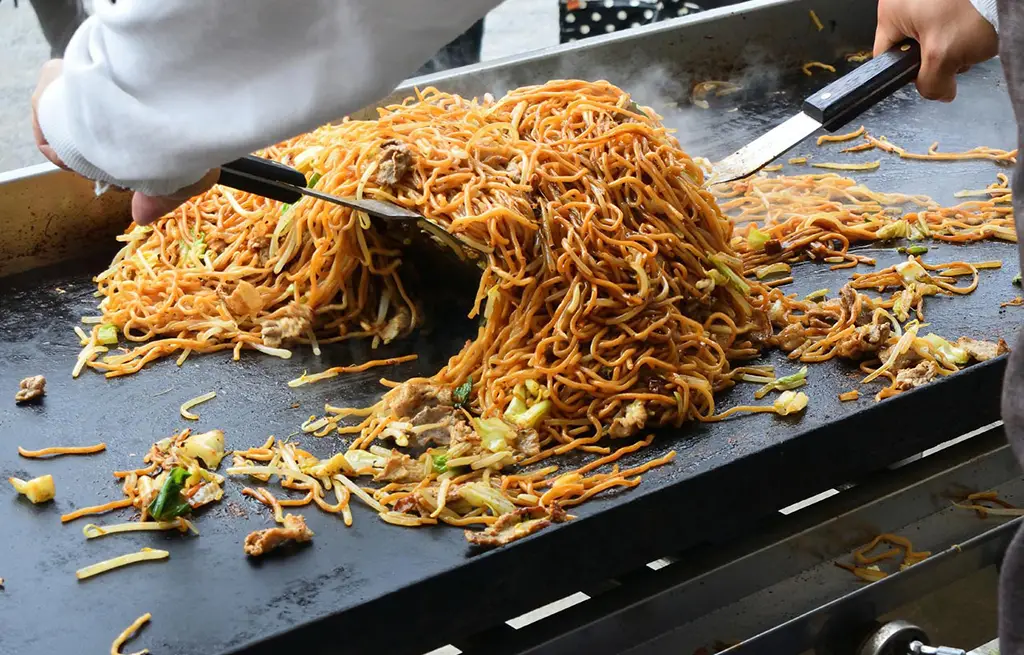
Yakisoba is without doubt one of the most favored festival dishes!
The simple yakisoba consists of stir-fried soba noodles (which literally means yakisoba) along with pork, carrots, and cabbage. It is then covered with katsuobushi (bonito flakes), benishoga (pickled ginger) and/ or mayonnaise.
Karaage
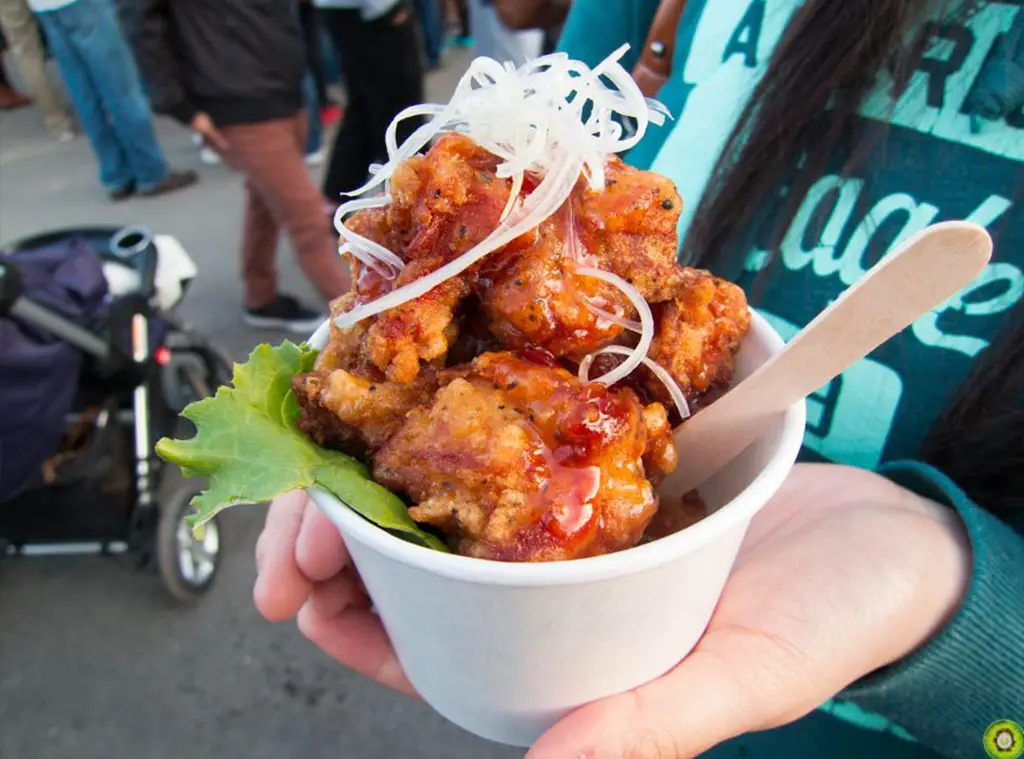
The chicken dish is a quick yummy treat for the summer festival!
This is a bite-sized fried chicken dish with a different sauce from Western fast food. What does it taste like? Just try and give your comment yourself.
Kushiyaki

Kushiyaki means grilled or skewered meats.
It includes all kinds of grilled or skewered meats, for example, beef, pork, or even fish. But the most well-known is definitely yakitori (again chicken). In terms of yakitori, there are also a number of types ranging from the thigh (momo) to ground meatballs (tsukune) or skin (kawwa)
Kakigori
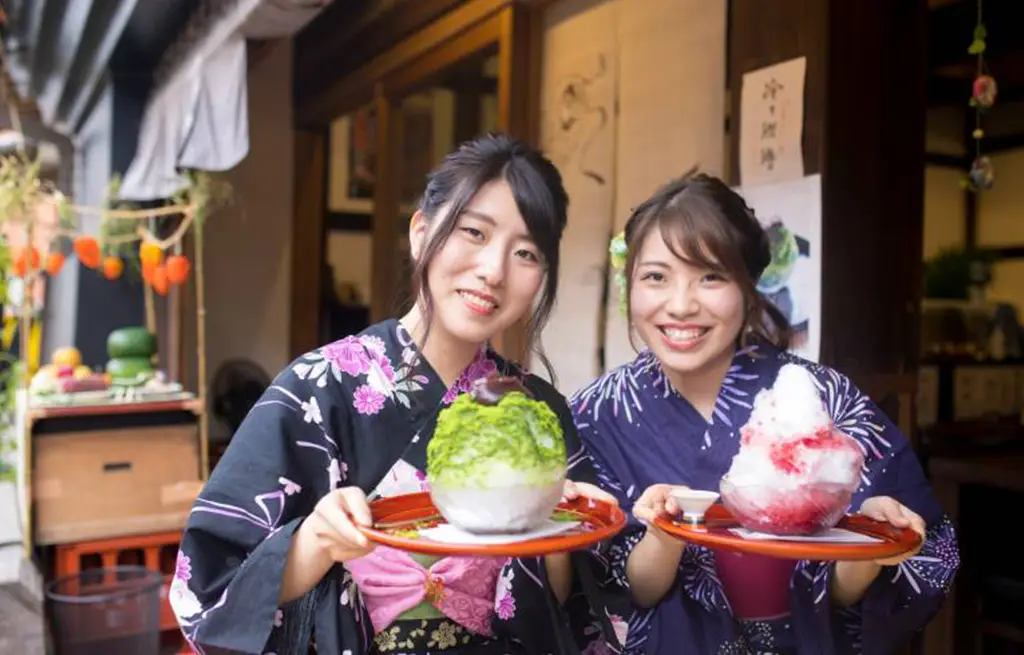
Kakigori is basically a bow full of shaving ice and syrup with diverse favors.
No festival can be complete without Kakigori, shave ice. It is basically a bow full of shaving thin crystal clear ice. People usually add fruit or tea flavoring fruit or tea syrup. It melts in your mouth like ice cream and is perfect for those hot summer days.
Taiyaki
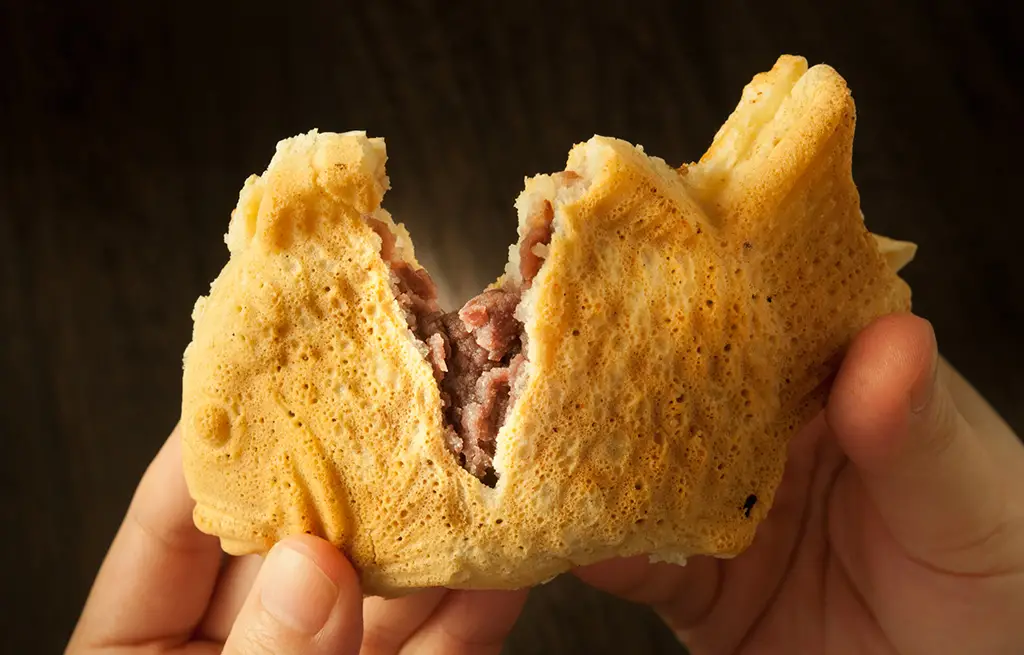
Taiyaki is a fish-shaped pancake with red bean filling (sometimes, there are other pastes like custard or matcha)
You may see this sweet treat somewhere in a convenience store in your country. Since Taiyaki is really popular worldwide. But it certainly tastes different in its original place, food stands in festivals.
Amezaiku
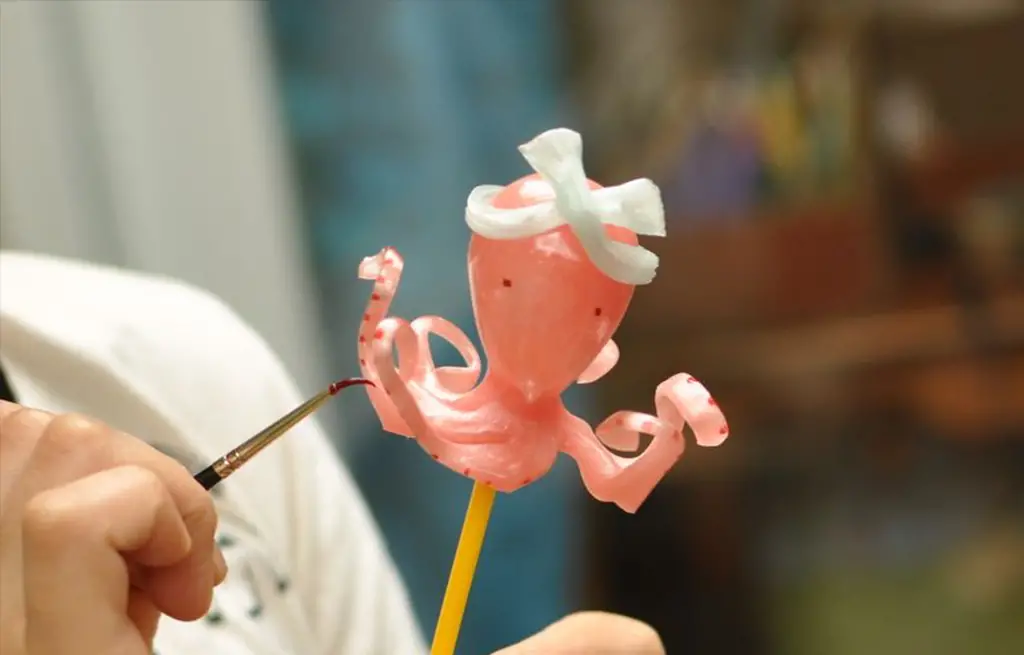
Amezaiku is decorative candy or an edible Traditional Craftwork.
It has a long history as not only a traditional candy for one thousand years but also a kind of beautiful craft artistry. The process of making this dish involves melting sugar into liquid and shaping it into animals or cartoon characters. You can find this candy in almost all Japanese summer festivals.
Mitarashi Dango
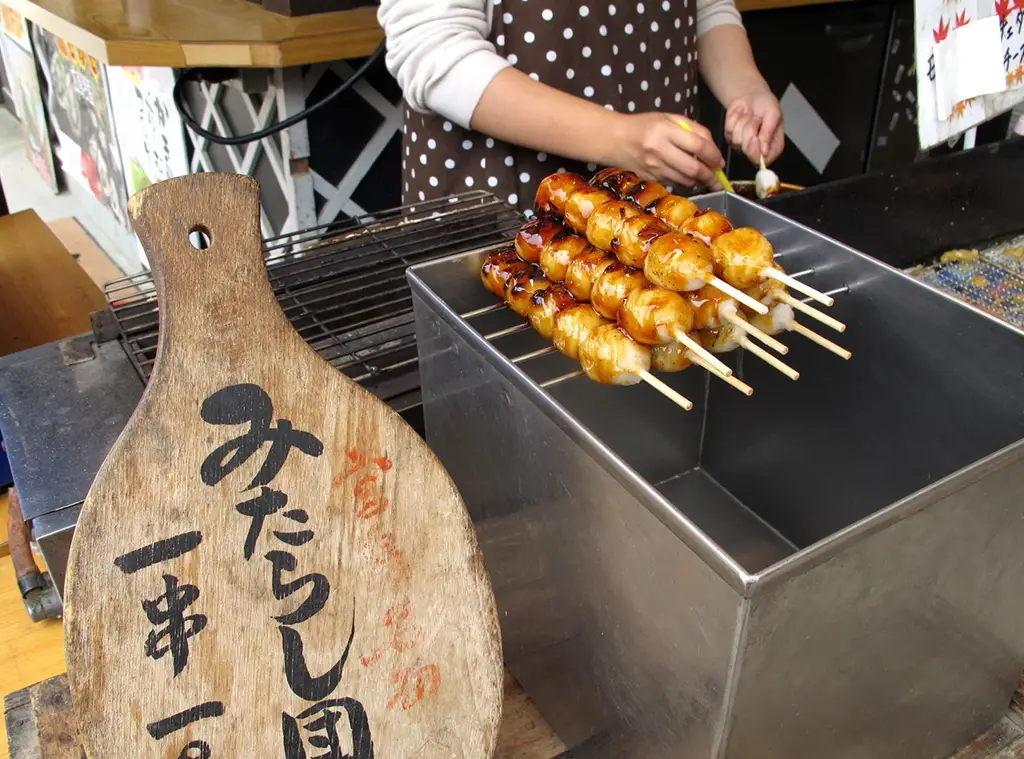
Mitarashi Dango is a stick of 5 grilled round rice cake, topped with shoyu (sticky soy sauce), sugar and starch.
It is the most popular Kyoto sweet, which is a stick of 5 grilled round rice cakes, topped with shoyu (sticky soy sauce), sugar, and starch. In fact, Mitarashi dango is available at a convenience store and dango shops.
Which game to play
There a number of amusement booths where you can play some traditional games such as:
- Kingyo-sukui: scoop goldfish with a paper scoop
- Super ball scooping: use a paper scoop to catch bouncy balls
- Shateki: Shateki: Use the fake gun to knock the targets off with the toy rifle
- Wanage: get rings and you toss the ring to the prize you want
FAQs
-
What is the Japanese summer festival?
Japan summer festivals, or Matsuri, are national and local celebrations from July to August. The length of the festival can be a few days to weeks long.
-
What is the famous festival in Japan?
Among all, Gion and Obon Matsuri are the two most well-known festivals and probably the large-scaled as well.
-
What do Japanese do in summer?
Like anywhere else in the world, the Japanese loves to have a beach day in summer. And Japan is a country surrounded by the sea, remember? Others do enjoy hiking to high altitude mountains like Fuji where the weather is much more pleasant compared to the city. It is also a good opportunity to watch fireflies lighting up the sky at night. Of course, can’t forget to mention the matsuri, Japanese summer festivals to join.
-
What is the purpose of Matsuri?
Matsuri takes place yearly to commemorate the gods, the seasons, and historical events.

